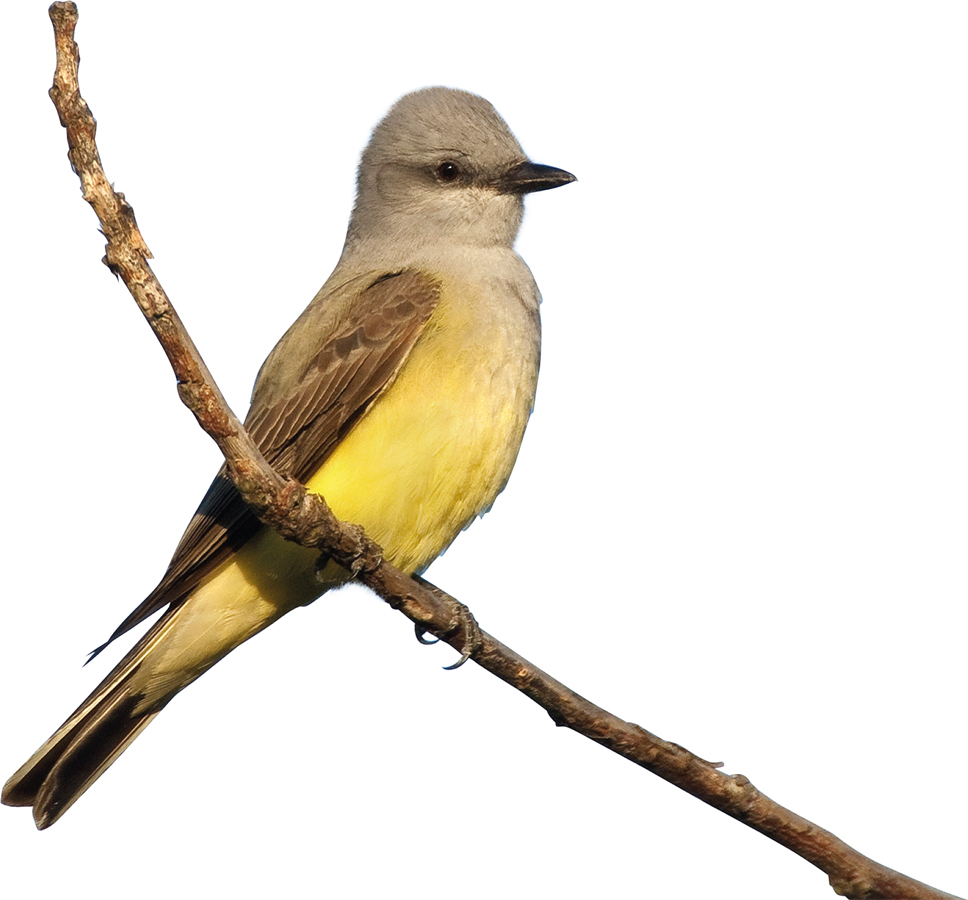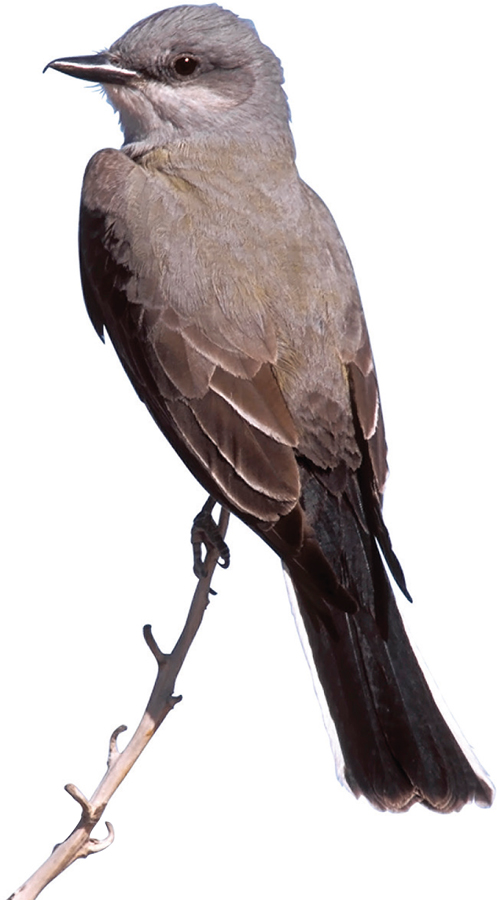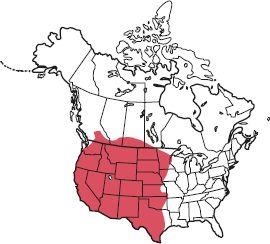Tyrannus verticalis

adult
The Western Kingbird appears rather pale overall when perched. Seen from above in flight, the contrast between the rather pale body and dark wings and tail is striking. The sexes are similar. Adults have a mostly pale gray head with a subtle dark “mask” through the eye and a whitish cheek. An orange central crown patch is invariably hidden. The back is pale greenish gray, the chest is pale gray, and the underparts—including the underwing coverts—are pale lemon yellow. The dark wings have pale feather margins, and the dark tail has pale outer feather margins. Juveniles are similar to, but paler than, adults.
The Western Kingbird is present as a breeding species mainly from April to August. It spends the rest of the year in Central America. It is the most widespread kingbird in western North America and is easy to observe since it often perches on wires or dead branches beside farmland roads. Its flycatching sorties attract attention, as does the male’s tumbling aerial courtship display.

adult

adult
FACT FILE
LENGTH 8–9.5 in (20–24 cm)
FOOD Insects, other invertebrates, and fruit
HABITAT Lightly wooded open country and farmland
STATUS Widespread and common summer visitor
VOICE Song (sung at dawn) comprises a series of call-like chip notes. Calls include a sharp chip and a trilling chatter
![]()
